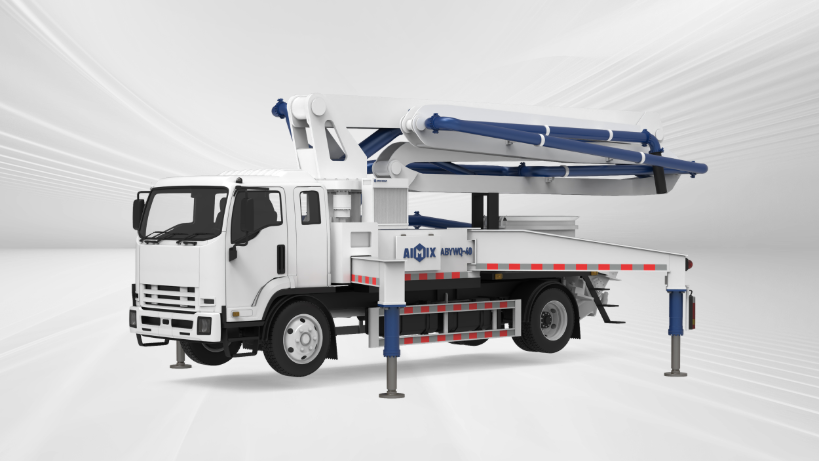Choosing the right concrete pumping solution for your construction project is a decision that reverberates through your budget, timeline, and overall site efficiency. It’s a classic matchup of versatility versus reach, of nimble-footedness against raw power. The truck-mounted line pump concrete and the illustrious boom pump each present a compelling operational paradigm, but their financial profiles and ideal applications diverge significantly. A superficial glance at rental rates tells only a fraction of the story. To truly optimize your return on investment, we must delve into a granular examination of acquisition costs, operational throughput, labor implications, and the often-overlooked concept of project fit. This cheerful breakdown will illuminate the path to the most financially sound and operationally brilliant choice for your specific needs.
Initial Outlay and Operational Footprint: The Acquisition Equation
The financial journey for each machine begins with a very different capital commitment. This initial outlay sets the stage for all subsequent ROI calculations and dictates the scale of project required to achieve profitability.
Line Pump: The Paragon of Affordability and Access
The truck-mounted line pump stands as a beacon of cost-effective entry into concrete pumping. Its acquisition cost is substantially lower than that of a boom pump, making it an attractive proposition for smaller enterprises or those looking to expand their fleet without monumental debt. The operational footprint is another key advantage. Its compact dimensions and reliance on flexible hose systems allow it to navigate constricted urban sites, narrow residential streets, and projects with challenging terrain where a larger boom pump simply cannot venture. This access unlocks a specific market niche.

Boom Pump: The High-Capital, High-Reach Powerhouse
In the opposite corner, the boom pump commands a premium price tag. This investment, however, purchases unparalleled reach and volumetric delivery speed. With articulated booms that can extend over obstacles and place concrete with pinpoint accuracy across a vast radius, the concrete boom pump is the undisputed champion of large-scale commercial projects, high-rise constructions, and sites where speed of placement is the paramount concern. The machine itself is a feat of engineering, but it requires a significant, open area for setup and operation.
Throughput, Labor, and the True Cost of Placement
Beyond the purchase price lies the dynamic world of operational costs. Here, the balance of power shifts based on the volume of concrete and the complexity of the placement.
The Labor Intensity Spectrum
This is where a critical distinction emerges. A line pump operation is inherently more labor-intensive. It requires a crew to manually manage and reposition the cumbersome placement hoses, a physically demanding task that can slow the overall pace. Conversely, a boom pump is operated with sublime efficiency by a single, skilled technician from the comfort of the cab, using remote-controlled hydraulic functions to guide the boom. This labor differential has a direct and substantial impact on the cost-per-yard of concrete placed.

Volumetric Velocity and Project Scale
The boom pump excels in its ability to move vast quantities of concrete rapidly. Its larger pipeline diameter and powerful hydraulics enable a much higher cubic yards-per-hour output. For a massive foundation pour or a multi-story deck, this velocity is not just a convenience; it is a critical path item that can save thousands in reduced labor time and shortened project schedules. The trailer concrete pump, while steady, operates at a lower volumetric capacity, making it ideal for smaller pours, backfilling, or shotcrete applications where slow, controlled placement is actually beneficial.
Calculating Your Optimal Return on Investment
The ultimate question—which pump delivers a superior ROI—has a wonderfully straightforward answer: it depends entirely on your project portfolio. There is no universal winner, only the perfect tool for the specific job.
Matching the Machine to the Mission
For contractors specializing in swimming pools, residential foundations, sidewalks, and smaller commercial jobs, the line pump offers an exceptional return. Its lower capital cost can be recovered quickly across multiple, smaller projects. Its versatility and access capabilities mean it is rarely idle. For these firms, a truck mounted concrete pump would be a financially burdensome asset, sitting underutilized and failing to justify its high fixed costs.
When Scale Dictates the Solution
For major civil and commercial contractors, the boom pump is not an expense but a revenue-generating engine. Its ability to command premium rental rates and complete large-scale pours with breathtaking efficiency creates a powerful profit center. The high initial investment is amortized over a massive volume of concrete, driving down the cost-per-yard and delivering an ROI that a line pump could never achieve on a 30-story building. The key is consistent utilization on appropriately scaled projects. By honestly assessing your typical project size, volume requirements, and site constraints, you can confidently select the pumping champion that will maximize your financial returns and operational joy for years to come.